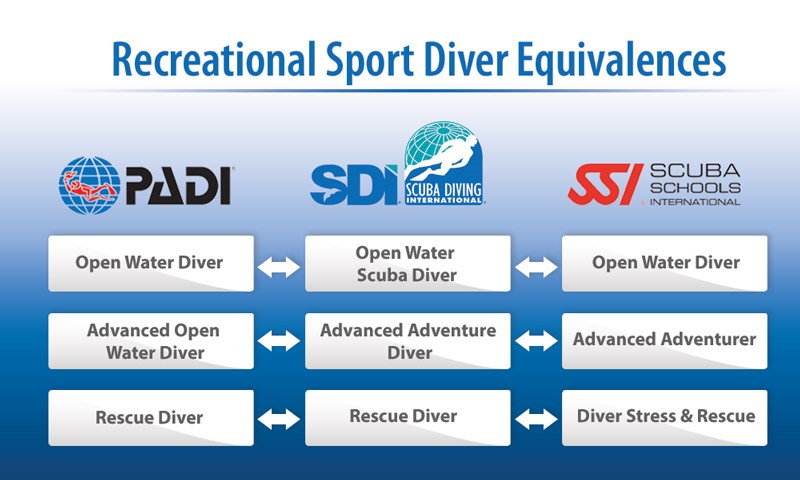PADI and SSI: Strong partners of DiveNow
At DiveNow, we work with PADI and SSI, the world’s two largest diving associations, which meet the highest safety standards in training. For you, this means that you can take your practice training in prestigious dive centers in more than 120 countries around the world! In total, you can choose from more than 25,000 partner diving centers! But where is the difference between PADI and SSI?
For the hurried: PADI vs. SSI
| Diving Association | PADI | SSI |
|---|---|---|
| Diving Centers worldwide | 15000 (of which xxx in Thailand) | 15000 (of which xxx in Thailand) |
| Available courses / badges | 100 | 50 |
| Price for the beginners course (theory) | 149,- | 99,- |
| Theory duration beginners course | up to 3 days | up to 2 days |
| Most popular course | Action Diver | Wreck Diver |
| course start | within 24 hours | immediately |
| Our assessment | – | – |
| Quality online courses | 4/5 | 5/5 |
| Diving Center Availability | 5/5 | 4/5 |
| founded | 1960 | 1990 |
| trained divers | 10 Mio. | 5 Mio. |
| overall evaluation | 4/5 | 5/5 |
PADI and SSI - Where is the difference between the diving training organizations?
PADI (Professional Association of Diving Instructors) and SSI (Scuba Schools International) are on everyone’s lips when it comes to diving courses. But how do the two organizations differ from each other? We will take a closer look at the training structure of PADI and SSI!
PADI and SSI - the similarities
Admittedly, PADI enjoys a somewhat stronger reputation worldwide than SSI. In terms of the quality of the training, however, the organizations can certainly compete. This becomes all the more obvious when we take a look at their similarities.
Recognition and quality
Both PADI and SSI adhere to the guidelines of the World Recreational Scuba Training Council (WRSTC). In terms of quality, there is therefore no difference between the associations. The certifications of SSI and PADI are recognized worldwide.
Possibility of eLearning
PADI and SSI also allow their students to complete theory lessons in the form of an eLearning course. This is handy as it saves you precious holiday time. In our course list, we have compiled all eLearning courses (most of them with later practice) for you.
Course flow
The flow of an SSI and the corresponding PADI course is comparable. Both associations provide you with all the necessary skills and abilities needed for the chosen certificate.
SSI and PADI – the differences
Despite all the similarities, there are some differences between the SSI and PADI diving training organizations. These relate in particular to the price and the learning methods.
Price differences
If you compare our SSI and PADI courses, you will quickly notice that PADI is more expensive than SSI. This is primarily due to the fact that PADI provides its students with extensive materials. The purchase of reference works and co., is obligatory at PADI – contrary to SSI. Also for the pure eLearning one must reach deeper in his pocket with PADI.
Course descriptions
In part, comparable courses are described differently with PADI and SSI. This can sometimes cause confusion. Tip: In our course list you will find the comparable SSI and PADI courses side by side. Now take a look at the equivalence table of the three most important certifications:

eLearning-Access
The eLearning content of PADI and SSI is comparable. However, there are differences in the maximum access time. With PADI, you can access the system for a maximum of one year after logging on. With SSI there are no restrictions. A refresher course is also possible at any time.
Teaching methodology
Last, but not least, there are some differences in teaching methodology. PADI teaches courses according to a rigid system. The order of the individual modules is mandatory. SSI is more flexible. If necessary, a teacher can also vary the course of the course to meet the special needs of the students.
Key facts at a glance
We hope you found our little insight into the differences and similarities between SSI and PADI useful. The following key facts should you take from this contribution:
- PADI and SSI comply with WRSTC standards and therefore are qualitatively comparable.
- The certifications of both associations are recognized worldwide.
- The course names are partly different between the associations, but a comparison is possible.
- There are differences in the course title, the actual method, the price and the eLearning.


